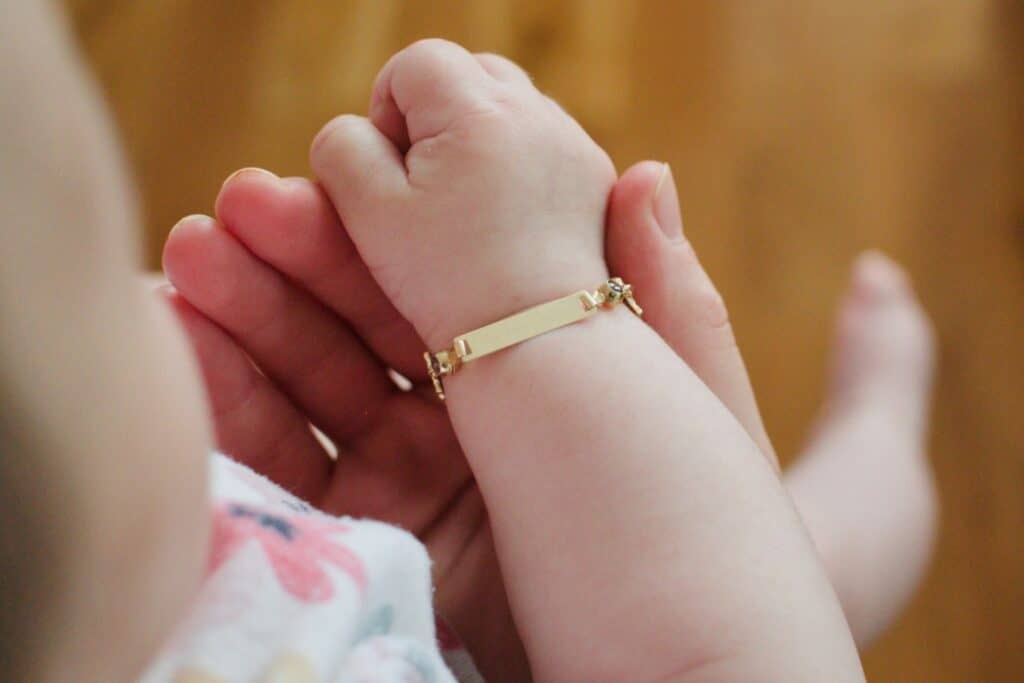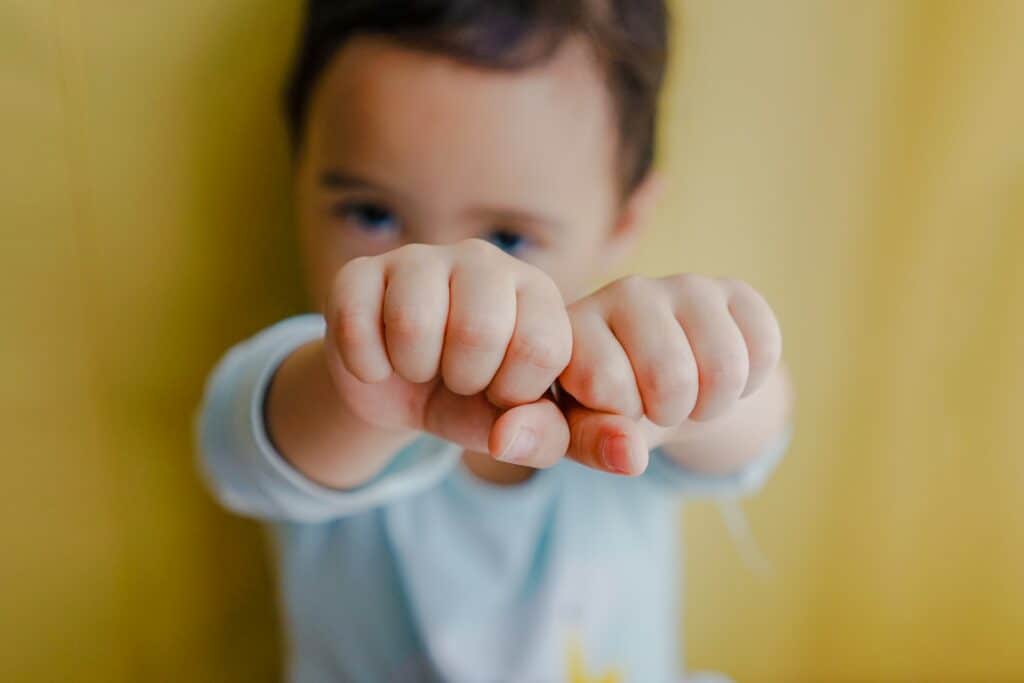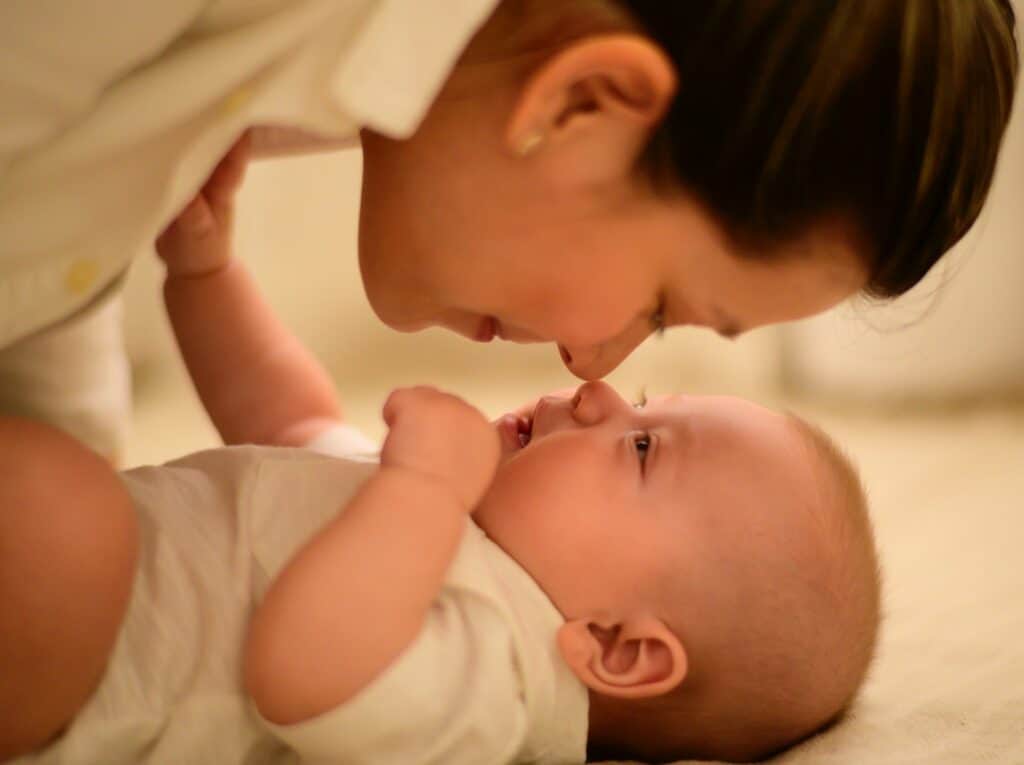Child shaking hands when excited is a common behavior that many parents and caregivers may observe in young children. This physical manifestation of excitement can be a sign that the child is experiencing strong emotions, such as happiness or anticipation. While it may seem unusual to some, shaking hands when excited is a normal behavior that does not typically require any intervention.
Understanding a child’s excitement is an important aspect of parenting and caregiving. Physical manifestations of excitement, such as shaking hands, can provide important clues about a child’s emotional state. Identifying triggers that cause excitement and understanding associated conditions, such as anxiety or sensory processing issues, can help parents and caregivers better support the child’s needs. In this article, we will explore the topic of child shaking hands when excited, including common behaviors and symptoms, diagnosis and treatment options, and the role of education and communication in supporting children who exhibit this behavior.
Key Takeaways
- Shaking hands when excited is a common behavior in young children that does not typically require intervention.
- Understanding a child’s excitement and identifying triggers and associated conditions can help parents and caregivers better support the child’s needs.
- Diagnosis and treatment options, as well as education and communication, play an important role in supporting children who exhibit this behavior.
Understanding Child’s Excitement
Excitement is a natural emotion that children experience when they encounter something new or interesting. It can be triggered by a variety of factors, such as meeting new people, receiving gifts, or participating in fun activities. When children are excited, they may exhibit a range of behaviors, including jumping, clapping, and shaking hands.
Parents should understand that shaking hands is a common way for children to express their excitement. It is a sign that they are happy and eager to engage with others. Children may shake hands with their parents, siblings, friends, or even strangers. This behavior is particularly common in social settings, such as parties, playdates, or school events.
It is important for parents to encourage their children’s excitement and help them express it in appropriate ways. They can do this by acknowledging their child’s feelings and engaging in positive interactions. For example, parents can shake hands with their child and say, “I’m so happy you’re excited!” or “Let’s go have some fun together!”
Parents should also be aware that shaking hands may not be the only way their child expresses excitement. Some children may prefer to hug, high-five, or dance when they are happy. It is important to respect each child’s individual expression of excitement and avoid forcing them to conform to specific behaviors.
In conclusion, understanding a child’s excitement is an important part of parenting. Shaking hands is a common way for children to express their happiness and eagerness to engage with others. By encouraging positive interactions and respecting each child’s individual expression of excitement, parents can help their children grow and thrive.
Physical Manifestations of Excitement

Shaking Hands
When a child is excited, shaking hands is a common physical manifestation. This shaking can be mild or severe, and it may last for a few seconds or several minutes. The shaking may be accompanied by a feeling of nervousness or anxiety, but it is generally harmless.
Flapping Hands
Another common physical manifestation of excitement in children is hand flapping. This behavior involves rapidly moving the hands up and down, often while making a vocalization. Hand flapping can be a sign of excitement, but it can also be a sign of anxiety or sensory overload.
Rocking Back and Forth
Rocking back and forth is another physical manifestation of excitement in children. This behavior involves moving the body back and forth while sitting or standing. Rocking can be a calming behavior for some children, but it can also be a sign of anxiety or sensory overload.
Rhythmic Shaking
Rhythmic shaking is a physical manifestation of excitement that involves shaking the body in a rhythmic pattern. This behavior may be accompanied by vocalizations or other movements, such as leg shaking or foot tapping. Rhythmic shaking can be a sign of excitement or anxiety, but it is generally harmless.
Overall, physical manifestations of excitement in children can take many forms, including shaking hands, hand flapping, rocking back and forth, and rhythmic shaking. These behaviors are generally harmless and may be a sign of excitement or anxiety. It is important for parents and caregivers to understand these behaviors and to provide support and guidance to help children manage their emotions.
Identifying Triggers
Identifying triggers is an important step in understanding why a child may shake hands when excited. Triggers can be anything that causes a child to feel strong emotions, stress, or excitement. Some common triggers include loud noises, social interactions, and strong emotions.
Parents and caregivers can help identify triggers by paying attention to the child’s behavior and environment. They can keep a journal or log of the child’s behavior and note any events or situations that seem to trigger the shaking behavior.
It is important to note that not all children will have the same triggers. What may be a trigger for one child may not be a trigger for another. Therefore, it is important to observe the child and their behavior closely to identify their individual triggers.
Once triggers have been identified, parents and caregivers can work to reduce or eliminate them as much as possible. This may involve creating a more calming environment for the child, avoiding loud noises or stressful situations, or providing the child with tools to manage their emotions and stress.
In some cases, professional help may be necessary to help identify and manage triggers. A pediatrician or child psychologist can provide guidance and support to parents and caregivers in identifying triggers and developing strategies to manage them.
Overall, identifying triggers is an important step in understanding and managing a child’s shaking behavior when excited. With careful observation and support, parents and caregivers can help their child manage their emotions and stress in a healthy and positive way.
Associated Conditions
There are several conditions associated with children who shake hands when excited. These conditions can range from neurological disorders to metabolic conditions.

Autism Spectrum Disorders
Children with Autism Spectrum Disorders (ASD) may exhibit hand flapping or shaking as a form of self-stimulation. This behavior is often seen when the child is excited or overwhelmed. It is important to note that not all children with ASD exhibit this behavior, and it is not exclusive to ASD.
Anxiety Disorders
Anxiety disorders can cause children to shake or tremble when they are anxious or excited. This can be a result of the body’s fight or flight response to stress. Children with anxiety disorders may also exhibit other symptoms such as sweating, rapid heartbeat, and difficulty breathing.
Attention Deficit Hyperactivity Disorder
Children with Attention Deficit Hyperactivity Disorder (ADHD) may exhibit impulsive behavior, including shaking or fidgeting. This behavior can be a result of the child’s inability to sit still and focus for extended periods of time.
Neurological Disorders
Neurological disorders such as essential tremor, multiple sclerosis, and seizure disorders can cause involuntary shaking or tremors. These conditions can also cause other symptoms such as muscle weakness, difficulty walking, and speech problems.
Metabolic Conditions
Metabolic conditions such as overactive thyroid or liver failure can cause tremors or shaking in children. These conditions can also cause other symptoms such as weight loss, fatigue, and changes in appetite.
It is important to note that shaking hands when excited is not always indicative of an underlying condition. However, if a child exhibits other symptoms or the behavior is interfering with daily life, it is important to seek medical attention.
Common Behaviors and Symptoms
When children get excited, they may exhibit a range of behaviors and symptoms. Some of these behaviors are normal and expected, while others may be signs of underlying issues. Here are some common behaviors and symptoms that children may display when they are excited:

- Hand shaking: One common behavior that children may exhibit when they are excited is shaking their hands. This may be a sign of nervous energy and can be a form of self-stimulation.
- Tics: Tics are sudden, repetitive movements or sounds that are difficult to control. They can be triggered by excitement or stress and may include eye blinking, facial grimacing, or throat clearing.
- Stimming: Stimming is short for self-stimulatory behavior. It is a repetitive behavior that can be calming or pleasurable for the child. Examples of stimming include hand flapping, rocking back and forth, or spinning in circles.
- Stereotypy: Stereotypy is a repetitive behavior that is not necessarily self-stimulatory. It may include actions like biting, scratching, or humming. Stereotypy can be a sign of anxiety or boredom.
- Visual stimming: Visual stimming is a type of self-stimulatory behavior that involves looking at or focusing on specific visual stimuli. This may include staring at lights, spinning objects, or patterns.
It is important to note that while some of these behaviors may be normal, others may be signs of underlying issues. If you are concerned about your child’s behavior or symptoms, it is important to speak with a healthcare provider for guidance and support.
Understanding Stimming
Stimming, also known as self-stimulatory behavior, refers to repetitive movements or sounds that an individual may engage in to provide sensory input. These behaviors are often seen in individuals with autism spectrum disorder (ASD) and other developmental disabilities, but can also be present in neurotypical individuals.
Self-stimulatory behaviors can take many forms, including hand flapping, rocking, spinning, tapping, and vocalizations. These behaviors may be comforting and help individuals regulate their emotions, reduce anxiety, or provide a sense of control.
However, stimming can also be a sign of unmet sensory needs. Individuals may engage in stimming behaviors when they are overstimulated or understimulated, and may benefit from additional sensory input or support to meet their needs.
One type of stimming behavior that is common in children is vestibular stimming, which involves movement and balance. Children may engage in vestibular stimming by spinning, jumping, or bouncing when they are excited or overwhelmed.
It is important to understand that stimming is a natural and normal behavior for many individuals, and should not be discouraged or punished. Instead, individuals may benefit from support and strategies to manage their sensory needs and behaviors in a positive and healthy way.
Diagnosis Process
When parents notice that their child shakes hands when excited, they should seek a diagnosis to determine the underlying cause. The diagnosis process involves a pediatrician’s role and medical tests.
Pediatrician’s Role
Pediatricians are the first line of defense when it comes to diagnosing a child’s condition. They will ask questions about the child’s medical history, including any previous illnesses or injuries. They will also perform a physical examination to assess muscle activity and look for any signs and symptoms that may indicate a neurological disorder.
If the pediatrician suspects a neurological disorder, they may refer the child to a specialist for further evaluation. In some cases, a referral to a neurologist or developmental pediatrician may be necessary.
Medical Tests
Medical tests can help diagnose the underlying cause of the child’s hand shaking. Blood tests may be ordered to check for any abnormalities in the child’s blood chemistry. An electroencephalogram (EEG) may be used to measure brain wave activity and detect any abnormalities that may indicate a seizure disorder.
Magnetic resonance imaging (MRI) may also be used to take detailed images of the brain and detect any structural abnormalities. Muscle activity tests may also be used to assess the child’s muscle function and detect any abnormalities.
It is important to note that the diagnosis process may vary depending on the age of the child. For example, toddlers may require different tests than adults. It is also important to note that signs and symptoms may vary depending on the underlying cause of the hand shaking.
Treatment Options
There are several treatment options available for children who shake hands when excited. These options include medication, deep brain stimulation, and relaxation techniques.

1. Medications
Medications can be effective in reducing shaking in children. However, it is important to note that medications may have side effects and should be used under the guidance of a healthcare professional. Some common medications used to treat shaking include beta-blockers, anticonvulsants, and benzodiazepines.
2. Deep Brain Stimulation
Deep brain stimulation (DBS) is a surgical procedure that involves implanting electrodes in the brain to help control shaking. DBS has been shown to be effective in reducing shaking in some children, but it is not suitable for everyone. DBS is a complex procedure that carries risks and should only be performed by experienced healthcare professionals.
3. Relaxation Techniques
Relaxation techniques, such as deep breathing and meditation, can help children learn to control their shaking. These techniques can be practiced at home and can be effective in reducing shaking over time. It is important to note that relaxation techniques require practice and may not work for everyone.
Overall, there are several treatment options available for children who shake hands when excited. It is important to work with a healthcare professional to determine the best treatment option for your child.
Role of Education and Communication
Education and communication play a vital role in teaching children about appropriate behavior when interacting with others. Parents and educators can use various strategies to teach children about shaking hands when they are excited.

One effective strategy is to model the behavior. Parents and teachers can demonstrate how to shake hands properly and encourage children to practice the behavior. This can be done through role-playing activities or by incorporating handshakes into daily routines, such as greeting each other in the morning or before leaving school.
Another strategy is to use positive reinforcement. When a child exhibits appropriate behavior, such as shaking hands when excited, parents and teachers can praise and reward the child. This can be done through verbal praise, stickers, or other small rewards.
Communication is also important in teaching children about shaking hands. Parents and educators can explain to children the importance of using proper manners and etiquette when interacting with others. They can also explain why shaking hands is a sign of respect and how it can help build positive relationships with others.
It is important to note that education and communication should be age-appropriate and tailored to the child’s developmental level. Younger children may need more hands-on activities and visual aids, while older children may benefit from more in-depth discussions and explanations.
Overall, education and communication are essential in teaching children about appropriate behavior when interacting with others, including shaking hands when excited. By using effective strategies and tailoring them to the child’s needs, parents and educators can help children develop important social skills that will benefit them throughout their lives.
Outlook and Prognosis
The outlook for children who shake hands when excited is generally positive. It is a natural behavior that many children exhibit as they learn to express themselves and interact with others.
However, it is important for parents and caregivers to monitor this behavior and ensure that it does not escalate into more aggressive or harmful behavior. If a child is shaking hands too forcefully or inappropriately, it may be a sign of underlying issues that need to be addressed.
In most cases, children will outgrow this behavior as they mature and develop better social skills. Parents can help encourage positive behavior by modeling appropriate social interactions and providing praise and positive reinforcement when their child exhibits good behavior.
It is also important for parents to communicate with their child’s teachers and caregivers to ensure that they are aware of any behavioral issues and can work together to address them. With proper guidance and support, children can learn to express themselves in healthy and appropriate ways.
References and Further Reading
There are several resources available for those interested in learning more about children and their behavior when excited. Below are a few references and research studies that may be of interest:
References
- American Academy of Pediatrics. (2016). Shaken Baby Syndrome (SBS) and Abusive Head Trauma (AHT). Pediatrics, 138(4), e20161489. doi: 10.1542/peds.2016-1489
This article provides an overview of shaken baby syndrome and abusive head trauma, including the signs and symptoms, risk factors, and prevention strategies. It also includes a discussion of the legal and ethical issues surrounding these conditions.
- Centers for Disease Control and Prevention. (2019). Child Development: Positive Parenting Tips. Retrieved from https://www.cdc.gov/ncbddd/childdevelopment/positiveparenting/index.html
This resource from the CDC provides tips for parents and caregivers on how to promote healthy child development, including ways to encourage positive behavior and manage challenging behaviors.
Research
- Barr, R. G., Trent, R. B., & Cross, J. (2006). Age-related incidence curve of hospitalized Shaken Baby Syndrome cases: convergent evidence for crying as a trigger to shaking. Child Abuse & Neglect, 30(1), 7-16. doi: 10.1016/j.chiabu.2005.08.007
This study examines the relationship between infant crying and shaken baby syndrome, finding that the peak incidence of hospitalization for SBS occurs at around 2-4 months of age, when crying is most frequent and intense.
- Dallaire, D. H., & Weinraub, M. (2005). The stability of parenting behaviors over the first 6 years of life. Early Childhood Research Quarterly, 20(2), 201-219. doi: 10.1016/j.ecresq.2005.04.005
This longitudinal study explores the stability of parenting behaviors over the first 6 years of a child’s life, finding that positive parenting practices, such as warmth and responsiveness, tend to remain stable over time, while negative parenting practices, such as harshness and inconsistency, are more likely to change.
- Gartstein, M. A., Bridgett, D. J., Rothbart, M. K., Robertson, C., & Iddins, E. (2010). A latent growth examination of fear development in infancy: contributions of maternal depression and the risk for toddler anxiety. Developmental Psychology, 46(3), 651-668. doi: 10.1037/a0018280
This study examines the development of fear in infants and toddlers, finding that maternal depression and other risk factors may contribute to the development of anxiety in toddlers. The authors suggest that early intervention and support for mothers may help to prevent or mitigate the risk of anxiety in young children.
Related Posts:
Frequently Asked Questions
What are common signs of excitement in children?
Children may show excitement in many different ways, including jumping, clapping, and shouting. They may also become more talkative, fidgety, or restless than usual.
What is hand flapping and when does it occur?
Hand flapping is a repetitive movement of the hands, wrists, or fingers. It can occur when a child is excited, anxious, or overstimulated. It may also be a self-soothing behavior.
Is hand flapping a sign of autism?
Hand flapping can be a sign of autism, but not all children who flap their hands have autism. Other signs of autism include difficulty with social interaction, communication, and repetitive behaviors.
Can hand flapping be a normal behavior in babies?
Hand flapping can be a normal behavior in babies, especially during the first year of life. It may be a way for them to explore their environment and develop their motor skills.
At what age should hand flapping be a concern?
Hand flapping may be a concern if it persists beyond the first year of life or if it interferes with a child’s daily activities or social interactions. Parents should consult with their pediatrician if they have any concerns.
How can hand flapping be managed when it occurs?
There is no one-size-fits-all approach to managing hand flapping, as the behavior may have different underlying causes. Some strategies that may help include redirecting the child’s attention, providing sensory input, and teaching alternative coping skills. It is important to work with a healthcare professional to develop an individualized plan.

Iesha is a loving mother of 2 beautiful children. She’s an active parent who enjoys indoor and outdoor adventures with her family. Her mission is to share practical and realistic parenting advice to help the parenting community becoming stronger.
